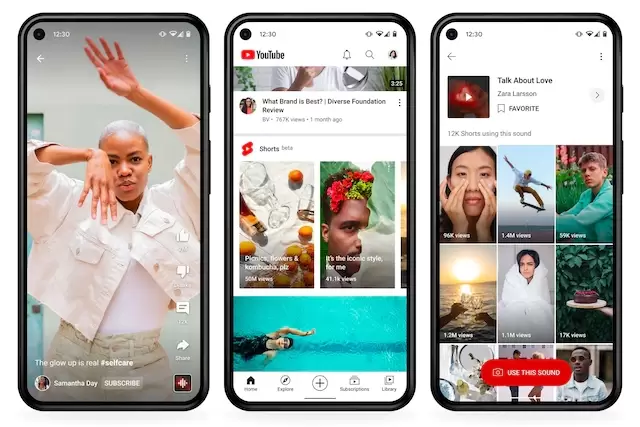Cardona, Mercedes (2022-11-01). Webisodes Promote AT&T
Marx, Nick (July 27, 2011). ""The Missing Link Moment": Web Comedy in New Media Industries". Young, Sherman (2011). "Review - Television studies after TV: Understanding television in the post-broadcast era". Journal of Communication Inquiry. The post-broadcast era is best defined as embodiment by a complex mediascape that cannot be maintained by broadcast television; in its wake, the popularity of webisodes has expanded because the internet has become a potential solution to television's ailments by combining interpersonal communication and multimedia elements alongside entertainment programing. A webisode may or may not have been broadcast on TV. Stelter, Brian (3 May 2012). "Nielsen Reports a Decline in Television Viewing". Christian, Aymar Jean (October 31, 2012). "The Web as Television Reimagined? Online Networks and the Pursuit of Legacy Media". These original web comedies are a means to monetize the audience. Some of the most notable webisodes are original comedies generated for an audience online viewers. Original comedies have become the preferred genre for webisodes because they deliver a low budget format for experimentation and prompt results.
These original web series are a means to monetize this transitional audience and produce new celebrities, both independently on the web and working in accordance to the previous media industry standards. The model for the popular website Funny or Die, is based entirely on distributing a variety of original comedy web series. Combs' webisodes were sponsored by Burger King, which used the web series to generate a brand community. It is a single web episode, but collectively is part of a web series. A webisode (portmanteau of "web" and "episode") is an episode of a series that is distributed as part of a web series or on streaming television. Webisodes have become increasingly common in the midst of the post-broadcast era, which implies that audiences are drifting away past free-to-use television design. Webisodes are regularly used by marketers to form these destinations. Companies create a social buzz online using digitalmedia marketing to generate branded community-based destinations. In 2011, Jeff Schroeder, known for his role in the reality series The Amazing Race, assisted AT&T with a digital marketing scheme based around webisodes. Comedians Will Ferrell and Adam McKay started this initiative with their series of webisodes about a vulgar two-year-old landlord. Post has been g enerat ed by G SA Content Ge nera tor DEMO!
 The campaign consisted of six webisodes that were each four minutes in duration. While there is no set standard for length, most webisodes are relatively short, ranging from 3-15 minutes in length. Webisodes are part of a trend called branded entertainment, which is growing due to the increased demand for marketers to find new methods to reach consumers in an era where the traditional media is losing viewers to the social web. Combs built hype around the web series by using his social media sites, such as Myspace, to direct users to the YouTube channel. In 2006, for example, hip-hop entrepreneur Sean Combs, aka P. Diddy, started his own YouTube channel called "DiddyTV," which he used to post webisodes and blog about his life on tour. What defines it is its online distribution on the web, or through video-sharing web sites such as Vimeo or YouTube. Each week a new webisode went up on sites like YouTube.
The campaign consisted of six webisodes that were each four minutes in duration. While there is no set standard for length, most webisodes are relatively short, ranging from 3-15 minutes in length. Webisodes are part of a trend called branded entertainment, which is growing due to the increased demand for marketers to find new methods to reach consumers in an era where the traditional media is losing viewers to the social web. Combs built hype around the web series by using his social media sites, such as Myspace, to direct users to the YouTube channel. In 2006, for example, hip-hop entrepreneur Sean Combs, aka P. Diddy, started his own YouTube channel called "DiddyTV," which he used to post webisodes and blog about his life on tour. What defines it is its online distribution on the web, or through video-sharing web sites such as Vimeo or YouTube. Each week a new webisode went up on sites like YouTube.
2009: webisode is introduced as a word into the Merriam-Webster's Collegiate Dictionary. 1998-99: First public use of the word webisode, attributed to Stan Lee Media in the marketing and promotion of The 7th Portal online superhero series created by Jesse Stagg and Steven Salem. Derived words also created at the time: Webisodic. In 2012, the Nielsen Company reported that the number of American households with television access has diminished for the second straight year, showing that viewers are transitioning away from broadcast television. Webisodes are also noted for their use of the Internet for further exchange of information, news and gossip about the series on various social networks. Contemporary trends indicate that the Internet has become the dominant mechanism for accessing Media Content. The Post-Broadcast era has been influenced by new media formats such as the internet. Journal of Media & Cultural Studies. 15 Content has moved onto the web not through the conventional media's branded websites, but through video services like YouTube; the distribution of television increasingly occurs through viral, rather than broadcast, networks such as those available through blogs or social networking services. 17 Funny or Die received serious attention from major television outlets, resulting in a partnership with HBO and the program Funny or Die Presents, which aired its first episode on HBO in February 2010 and featured recycled footage that had already run on the website.

Post a Comment for "Cardona, Mercedes (2022-11-01). Webisodes Promote AT&T"